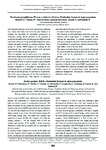Por favor, use este identificador para citar o enlazar este ítem:
http://www.alice.cnptia.embrapa.br/alice/handle/doc/673236| Título: | Bactris gasipaes H.B.K.: production factors in agro-ecosystems. |
| Autor: | MARINO, W.  MARSCHNER, P.   GÖLLNITZ, I.   SCHROTH, G.   EMMERICH, S.   GASPAROTTO, L.   LEHMANN, J.   UGUEN, K.   LIEBEREI, R.   |
| Afiliación: | University of Hamburg; University of Dusseldorf; Embrapa Amazônia Ocidental; University of Bayreuth; Laboratoire d'Ecologie des Sols Tropicaux. |
| Año: | 2002 |
| Referencia: | In: GERMAN-BRAZILIAN WORKSHOP ON NEOTROPICAL ECOSYSTEMS. ACHIEVEMENTS AND PROSPECTS OF COOPERATIVE RESEARCH, 2000, Hamburg. Proceedings... Hamburg: SHIFT: MADAM: WAVES, 2002. p. 298. |
| Descripción: | According with the studies realized the litter from peach palm (pupunha) contibutes with only 110 g/ha or 0,1% of total soil C to the C budget of the system. On the other hand it produces high quantities of root exudates. About 16.500 kg/ha C or 15% of total soil C respectively are released into the soil. Taking into account the C loss by microbial respiration and root respiration peach palm contributes with 10.700 kg/ha or 10% of total soil C respectively to the C budget of the system. Compared to C from root exudates the quantity of C from microbial biobass under peach palm is low. Only 45 kg/ha or 0,0004% of the total C originate from the microbial biomass. |
| Thesagro: | Biomassa Bactris Gasipaes Conservação do Solo Cultivo Multiplo Dióxido de Carbono Floresta Tropical Úmida Pupunha |
| Palabras clave: | Agrofloresta Brasil Amazonas Manaus |
| Tipo de Material: | Resumo em anais e proceedings |
| Acceso: | openAccess |
| Aparece en las colecciones: | Resumo em anais de congresso (CPAA)  |
Ficheros en este ítem:
| Fichero | Descripción | Tamaño | Formato | |
|---|---|---|---|---|
| 298.pdf | 15.86 MB | Adobe PDF |  Visualizar/Abrir |









